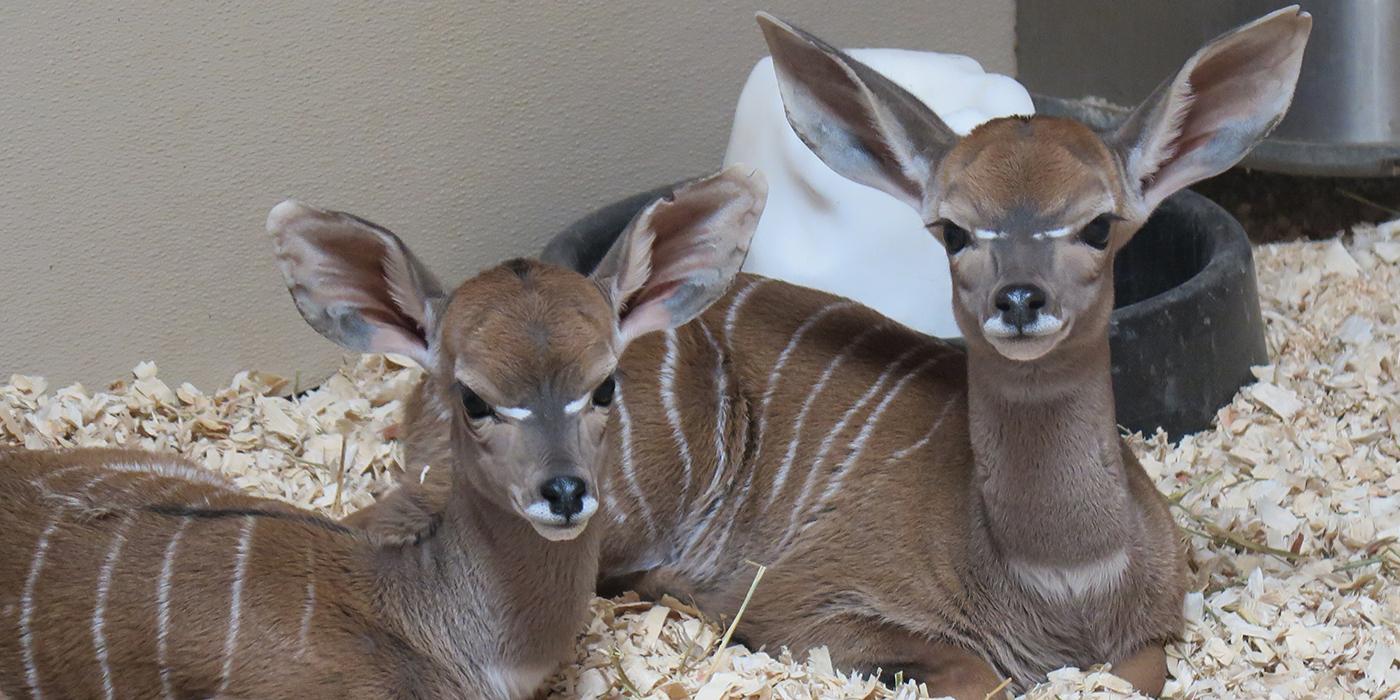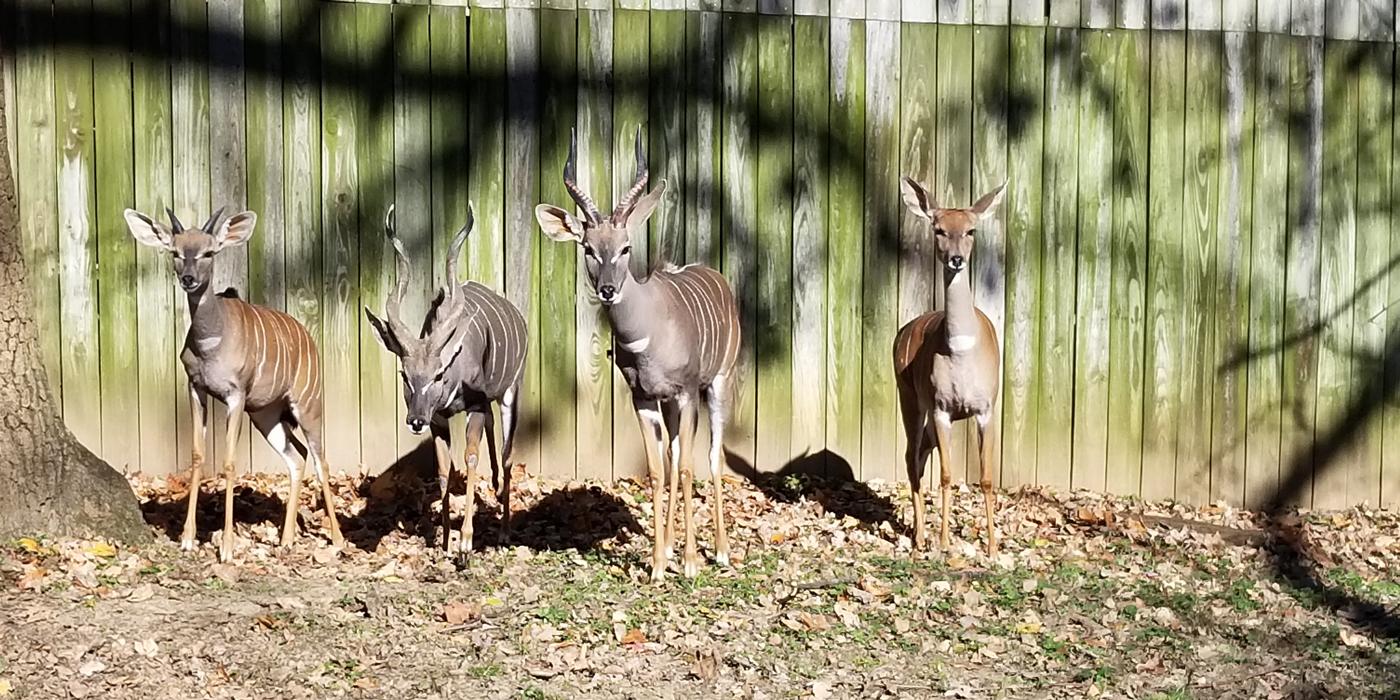New Hooves, New Home: Keeping up with the Lesser Kudu
Some new hooves joined the lesser kudu family this year, and two calves have grown up and moved to a new habitat at the Cheetah Conservation Station! Get the full update in this Q&A with animal keeper Kristen Clark and assistant curator Gil Myers.

Who are the new lesser kudu?
Since our last lesser kudu update, two new kudu joined our herd. Our seven-year-old female, Rogue, gave birth to male calf, Machi, March 29. Around that same time, three-year-old Galactus—Gal for short—arrived from the Saint Louis Zoo.
We have only seen positive interactions since we introduced Garrett, our 11-year-old male, to Gal and Machi (his son) over the summer. Garrett is recommended to breed with both Rogue and Gal by the Association of Zoos and Aquarium’s Species Survival Plan. We witnessed breeding behaviors between Garrett and both females within a few days of introductions in their yard!
Both Garrett and Gal have calm demeanors, which influence the rest of the herd and create a calm atmosphere. Gal seems comfortable approaching the exhibit perimeter while guests are watching. Machi tends to follow Gal’s lead in exploring the yard and we often see him grazing with Gal while his mom watches from a distance. Machi is definitely bold and confident with his family nearby. Rogue is also coming out of the bushes more to browse with the rest of the herd.
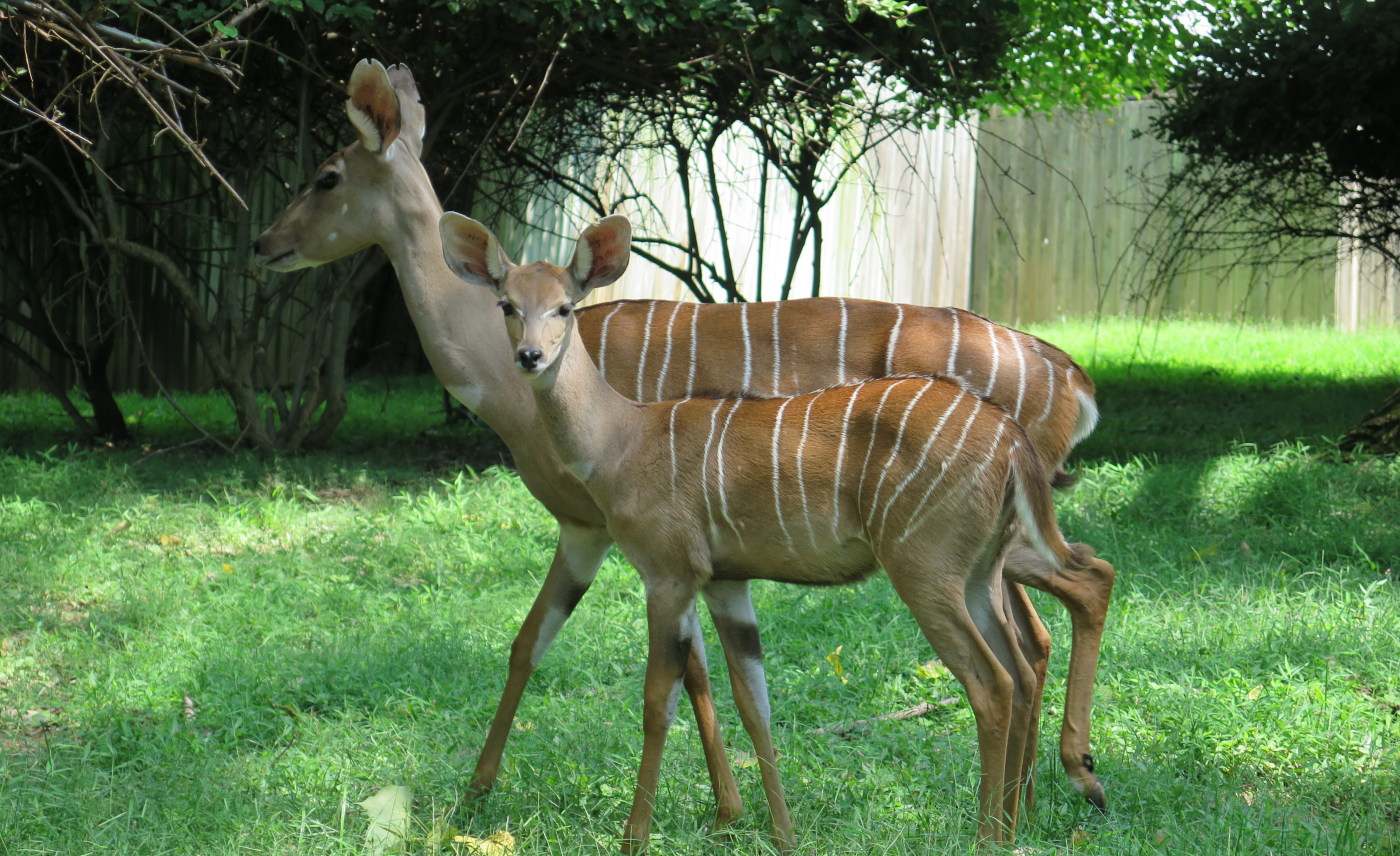
What milestones has Machi hit recently?
Machi is still nursing but has started eating pellets, browse (leafy branches) and hay just like the rest of the family. He is still a little shy around keepers and seems to prefer to watch what his mother and Gal do before approaching us. All of our lesser kudu participate in voluntary, positive-reinforcement husbandry training. They are trained to step on a scale and recall to the stall. We are currently working on scale training with Machi so we can monitor his growth.
In addition to introductions with Garrett, Machi (and Gal) was successfully introduced to our pair of Abyssinian ground hornbills, Karl and Karoline.
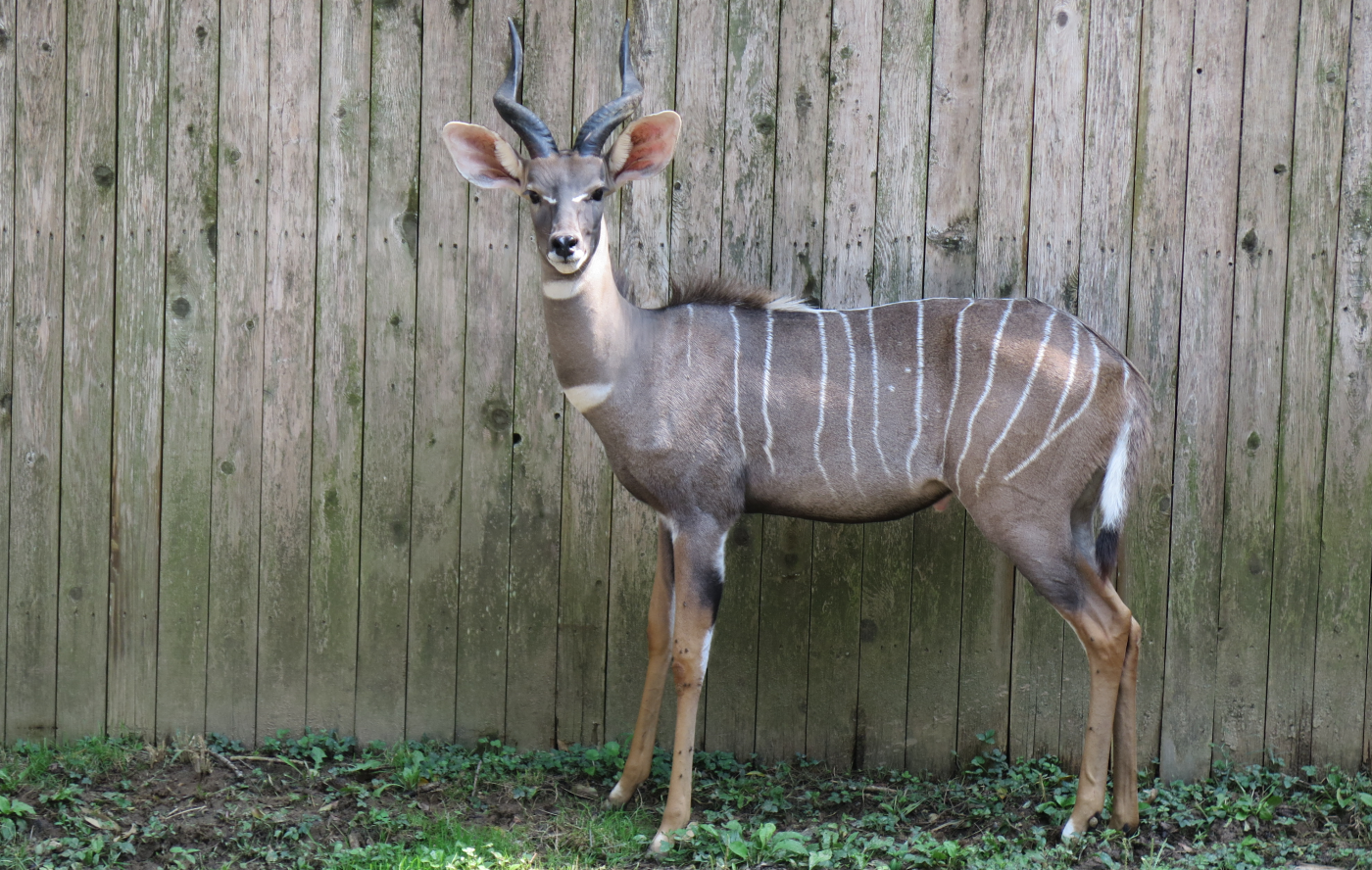
Where are Kushukuru and Toba?
Kushukuru (“Kushu” for short), now 2.5 years old, and Toba, who is almost 2 years old, are living in a different habitat at the Cheetah Conservation Station! They have moved in with Ruppell’s griffon vultures Tuck and Natelie. We introduced the boys to the new space slowly, as some of the noises from other animals and equipment are new. They showed great progress and moved calmly into a “safe zone” whenever they were afraid.
Kushu and Toba have matured to the point where it was naturally time for them to leave the family herd. We timed the separation based on social cues, as there was an escalation in sparring between the boys’ and their father, Garrett. Kushu and Toba are very close and have each other for company, which is good for a herd animal.
How did the vultures react to Kushu and Toba?
Tuck and Natelie were very curious about their new exhibit mates. They hung around the mesh separating the yard and stall area quite bit when Kushu and Toba first arrived. However, as they got used to the kudu, they gradually spent more time in their usual spots in the yard.
We introduced Kushu and Toba to the yard in early August and soon had all four animals out at the same time. The first time Kushu and Toba realized they were sharing the yard with the vultures — without a fence or anything in between them — they became very alert. They both cautiously approached Tuck and Natelie with their heads high, ears forward and neck bobbing. However, within ten minutes they realized all was well and stood next to the vultures to eat!
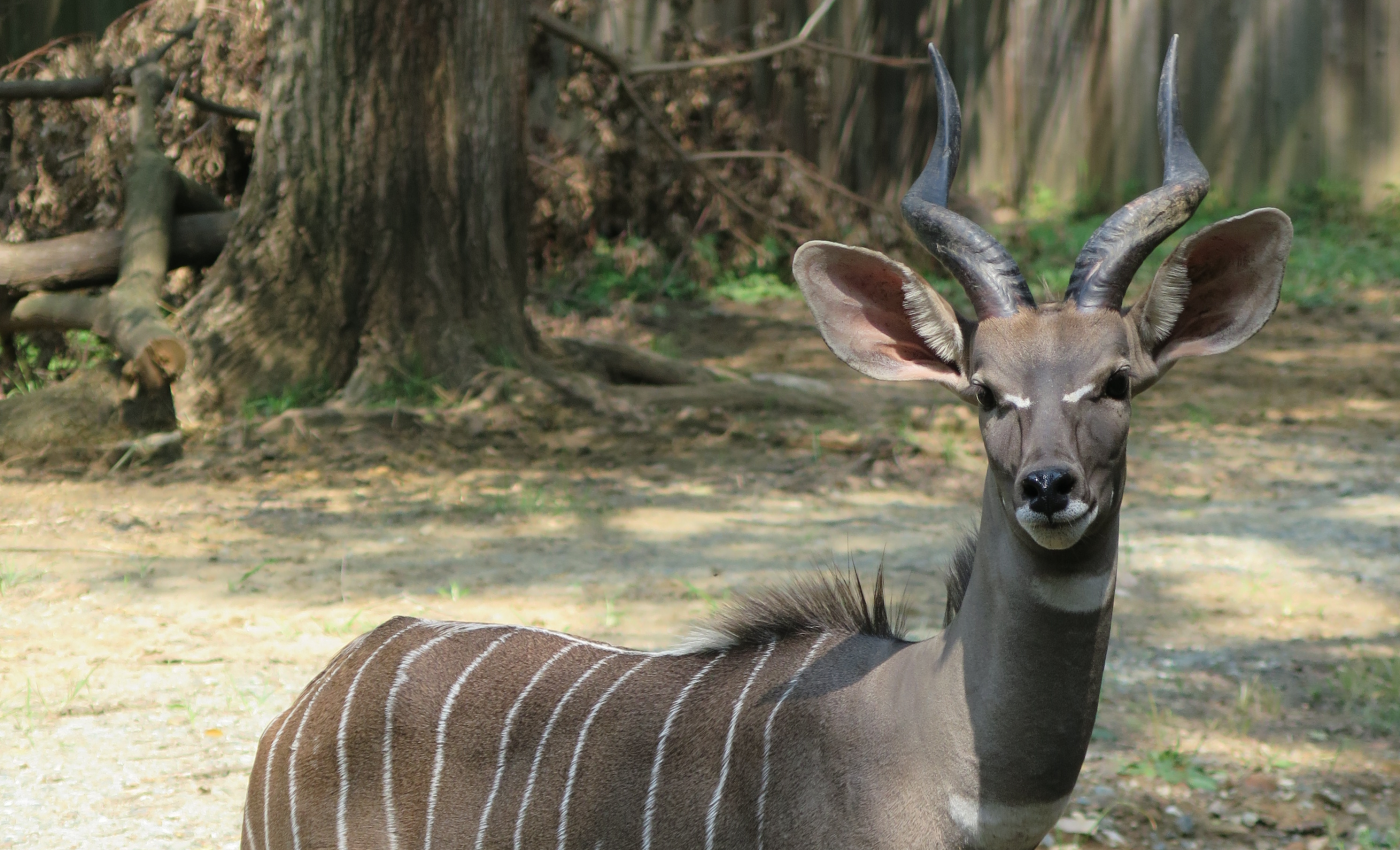
Any tips for viewing the lesser kudu?
Kudus tend to be shy animals. The best time to see them is typically the first hour after the Zoo opens and the last hour they’re on exhibit, from around 2:30 p.m. to 3:30 p.m. If you can’t spot them right away, be sure to scan the back of the yard along the fence line and in the shady spots on hot days.
You can tell the individual males apart from their horns. Garrett’s horns have two full twists, Kushu’s twist one-and-a-half times, Toba’s only have one twist and Machi has not started growing his horns yet. Garrett, Kushu and Toba all have their grey, adult coloration. To the casual viewer, their coats may all look the same but a trained eye may notice the slight variations in their stripe pattern!
Related Species:


